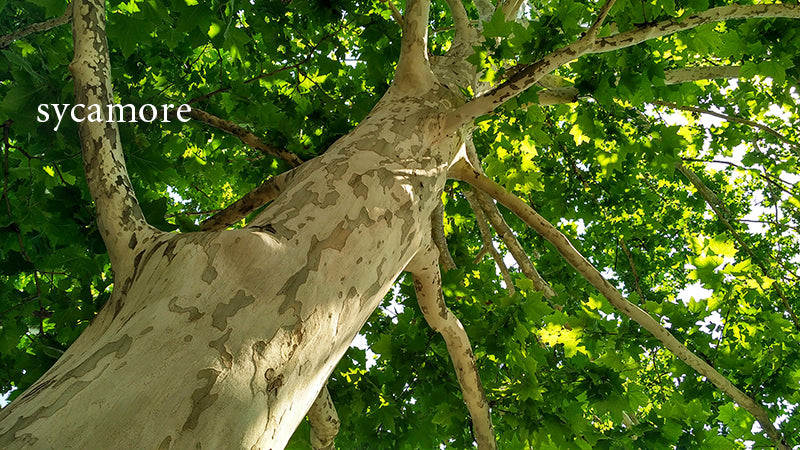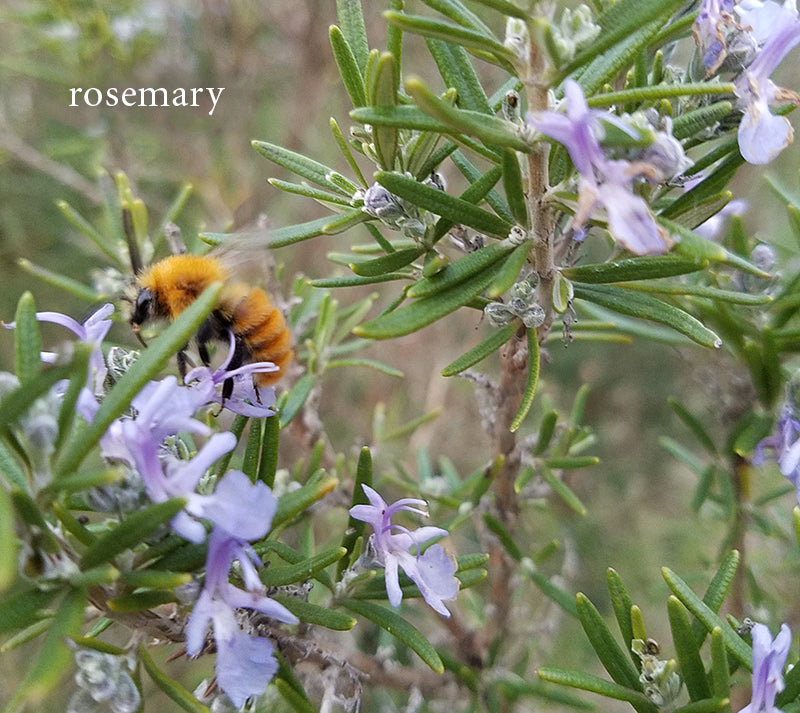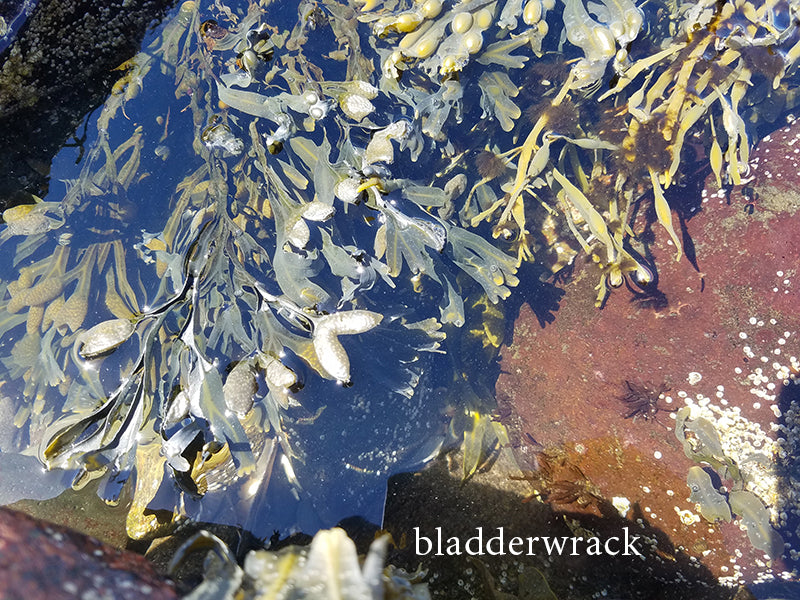Folklore and herbal medicine from the salty coast
If you live close by the sea, consider yourself lucky. Even if it’s a few hours away, a visit to the coast is worth it: facing the waves and the horizon line, you can feel enveloped by water, lost for a while, ready to embark on journeys far away. This flowing, primal element--undeniable in its vast presence--can bring a sense of peaceful smallness.
But a lake, a river, even a small stream you encounter on the trail can transport you, too. All the waters are linked somehow, as they drain though valleys and wetlands on their way back to the sea. As a kid, I thought about this a lot: it was one of the first great cycles that I recognized, and I felt intimately connected to it as I touched stream water and imagined that water reaching the sea, then the ocean beyond. One day, my dad drove us down to the salt marshes along the coast of the northern Adriatic, where the Po river meets the sea. We got on a small boat and wove through channels for a bit, then, past the last clumps of tall grasses clustered around a poplar tree, the sea opened. We had prepared a bottle with a small message, just a note of hello and simple contact information, and I threw it out into the expanse with as much strength as I could. I remember thinking of the sea as a giant, wise channel of communication that would cradle my bottle, perhaps for years, until its message could be delivered.

(Image credit:Luca Zampini https://creativecommons.org/licenses/by-sa/4.0/deed.en)
I have not heard from anyone yet, though I still might. But I remember that paradoxical feeling of being both small and insignificant in that wide water, and also part of a vast flow where my presence and intention mattered. I do not think that feeling has ever left me. And of course, right there with me, were the plants: a peculiar type, able to manage saltiness, speaking to our emotional selves and our sense of travel and adventure, salty themselves, and bitter, and fragrant.
Let’s start with the trees. Scrubby holm oaks (Quercus ilex) and the taller maritime pines (Pinus pinaster) are both important food sources and would mix with sycamores and poplar trees on the sandy islands of the Po river delta. Happily, I found the last two--sycamores and cottonwoods--on the New England coast too. They have a tolerance for water and salt and help anchor stable niches, building soil for the herbs and grasses.

Sycamores (Platanus genus) are towering trees that are at home by mountain lakes as much as on the coast. Their ancestors have been on the planet since the time of the dinosaurs (Cretaceous, just after the Jurassic)1. The American species (P. occidentalis) can be found in Italy and throughout Europe, though in some cases it has been hybridized with the native P. orientalis. Both species have characteristic mottled smooth bark, and leaves with a maple-like outline. These leaves have a subtle but complex scent, musky, sweet and fragrant, that comes out in high humidity or sea mist. The leaves can be turned into a hydrosol for spritzing indoors: this will make your house smell a little like a forest after it rains.
You can find poplars (Populus species) along canals and lakesides as much as by the sea. Their wood is relatively soft, and does not burn too well, but most species bring fragrant buds in Spring that can be made into salves and infused oils. In Italy, folks still collect buds from the native white poplar (Populus alba) to dry and brew into a tea for respiratory support*.

The seaberry (Hippophae rhamnoides), also known as sea buckthorn, is found throughout central Europe and northern Italy--but widely planted in North America, too. Its root system stabilizes sandy soils well, and it can tolerate salty seaside spray. The orange berries, mature in fall, contain essential fatty acids, vitamin C, and polyphenols with health-supporting qualities2*. These can be made into juice, or dried for tea: a welcome addition to the herbalist’s cold-weather kit.
Under the trees and shrubs, leaf litter builds, season after season. The soil starts to retain more moisture instead of letting it all trickle away through the sand, and herbs that are well-adapted to the wind and spray put down roots and thrive. Some of the first are the weedy ones: they are adaptable, resilient, and swift to reproduce. Many of these plants have traditional uses in herbal medicine, too.

The cocklebur (Xanthium species, esp. X. strumarium) is a common weed of disturbed places and, since it tolerates salt and moisture well, it finds a ready foothold on beaches around the world. It spreads via its hooked fruits, small burs that travel on fur and clothing. These same fruits are the medicinal part: when processed following traditional Chinese methods, they can be ground and taken in doses of three or four grams once or twice a day. These are used in tea formulas to help maintain the health of the airways and sinus passages*. Unfortunately, they are difficult for the home herbalist to approach: young green shoots, as well as those hooked spines on the fruits, contain a toxic compound known as carboxyatractyloside which must be degraded before use. The traditional method involves stir-frying until the fruits are golden-brown, then rubbing until all the spines are removed: this helps break down the toxic compound and remove the part where it is most concentrated3. The final step involves simmering on low heat for 15-20 minutes, which further neutralizes any remaining toxicity4. Since this is a complex and precise process, the safe bet is to use Xanthium fruits that have already been prepared. But it is still nice to know, when happening upon this seaside weed, that it has been used in herbal medicine for hundreds of years.
Across the world, different species of a plant most herbalists know as “sea holly” show off their prickly blooms. All around the Mediterranean the common species is Eryngium maritimum, whereas you find E. aquaticum along the New England coastline. This parsley family plant has a unique, spiny leaf (source of its common name) and a beautiful rounded flowerhead often in shades of indigo or blue. The young stems can be steamed as an edible spring green, but the roots are the part traditionally used in herbalism: “eringoes”, as the roots are sometimes called, were traditionally used to make an aphrodisiac and restorative tonic*. They were prepared by chopping and simmering in simple syrup (equal parts sugar and water), then dried. These were sometimes given out as party favors in Elizabethan England.

When you can hear waves crashing against the rocky coastline, that’s where you will find rosemary (Rosmarinus officinalis) growing wild (if the winters are mild enough). It forms bushes here, sometimes four feet tall, and flowers during winter when the air is moist and the sun less scorching. Legend has it that the first rosemary plant appeared on land as a botanical incarnation of sea-foam itself, reflected in its Latin name which means “dew of the sea”. Looking at a bush in full flower, you might for a moment think you are looking at the crest of a wave, white and blue and purple, frozen in time. Herbalists have gathered this herb to protect their homes from pests, season meats and seafood, brew into a tea for healthy circulation, and as a hair rinse (it was thought to bring out the lighter highlights of sun-bleached hair)*.

Sage (Salvia species, including S. officinalis and S. fruticosa) is another much-respected seaside herb. It can handle dry and sandy soils, and produces long-lasting, leathery, aromatic foliage that is used for cooking and in herbal medicine. Squash dumplings fried in sage brown butter were a frequent lunch during the harvest months; the tea usually came out, with a little honey, when it was time to gently soothe the throat. Modern research hints at sage’s ability to support good cognitive function and memory in adults5, and given how easy it is to grow (or to find, if you live by the coast in a climate with warm winters), we might all do well to consider its gentle tea*.

The Artemisia genus is rich in herbs that are fragrant and bitter, and that often grow in extreme conditions: from the parched desert, to the concrete jungle, to dry, rocky outcrops overlooking the sea. A particular species, A. maritima, is known as sea wormwood. Its leaves are narrower than its well-known cousin, but its silvery, rangy quality, small golden flowers, and intense bitterness are all the same. In North America, you won’t find this exact species, but the fragrant seaside mugwort (East coast) and sagebrush (West coast) make suitable alternatives. When an herb is this strongly-flavored, alcohol extraction is more practical than tea: you can use 100-proof vodka to cover a generous handful of chopped leaves in a pint-sized mason jar. After a few weeks with occasional shaking, then straining, the “tincture” is done: you can take 10-15 drops of this before meals as a digestive tonic*.

A final plant, found by the sea in temperate zones across the world, is the rose. R. rugosa is perhaps my favorite, and one of the hardiest. It thrives in salty sand and continues to produce fragrant blooms and giant hips for years and years, even with little fertility or attention. On the coast of Maine it takes over, wild and thorny, covering seaside slopes with pink and white June blooms that come back again in August. The flowers and hips are the most-often used, to make syrups and teas to uplift the heart and (for the hips of R. canina) provide support for healthy joints6*.

But no trip to the seacoast would be complete without a mention of seaweed. Bladderwrack (Fucus vesiculosus) is common around the world, and despite its somewhat bitter and off-putting flavor, has been used in herbal medicine as a nutritive tonic*--a way to bring the restorative, invigorating power of the sea back home. In Italy, it was traded across the arc of the Alps for just this purpose. We are just starting to understand how this herb may work in the human body, but part of its action might relate to its ability to support healthy thyroid activity7 at doses ranging from one to four grams of the dried seaweed daily*.

Bringing a little seaweed, or a basket with some medicinal herbs, home with you after a visit to the coast can be a way to build your herbal toolkit. But it can also be a way to take some of the wild, open, flowing power of the sea back too: tonics made from sea-plants contain the intangible essence of this elemental place. If saltwater waves speak to you, living in a cottage on a rugged bluff is not the only way to commune with them. Like all the special herbs from the different ecosystems and bioregions of the world, seaside herbs carry a terroir that brings you back, even if you are sitting at the kitchen counter far inland. As you sip rosemary rosehip tea, or taste a bitter/salty oceanside mugwort tincture, think of the sea spray that kissed your herbs and the water that fed them. Where did that water travel in the great global flow before it reached your lips? Want messages does it bring?
- BERRY, EDWARD W. "Notes on the geologic history of Platanus." The Plant World 17.1 (1914): 1-8.
- Rosch D, et al., Structure-antioxidant efficiency relationships of phenolic compounds and their contribution to the antioxidant activity of sea buckthorn juice, Journal of Agricultural Food Chemistry 2004; 51(15): 4233-4239.
- Fan, Wenxiang, et al. "Traditional uses, botany, phytochemistry, pharmacology, pharmacokinetics and toxicology of xanthium strumarium L.: A review." Molecules 24.2 (2019): 359.
- Chen, Liang-Yu, Anren Hu, and Chih-Jui Chang. "The degradation mechanism of toxic atractyloside in herbal medicines by decoction." Molecules 18.2 (2013): 2018-2028.
- Lopresti, Adrian L. "Salvia (sage): a review of its potential cognitive-enhancing and protective effects." Drugs in R&D 17.1 (2017): 53-64.
- Christensen, Robin, et al. "Does the hip powder of Rosa canina (rosehip) reduce pain in osteoarthritis patients?–a meta-analysis of randomized controlled trials." Osteoarthritis and Cartilage 16.9 (2008): 965-972.
- Yarnell, Eric, and Kathy Abascal. "Botanical medicine for thyroid regulation." Alternative & Complementary therapies 12.3 (2006): 107-112.







